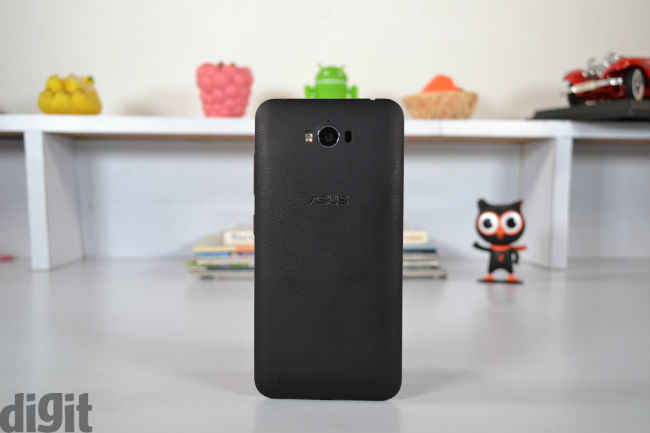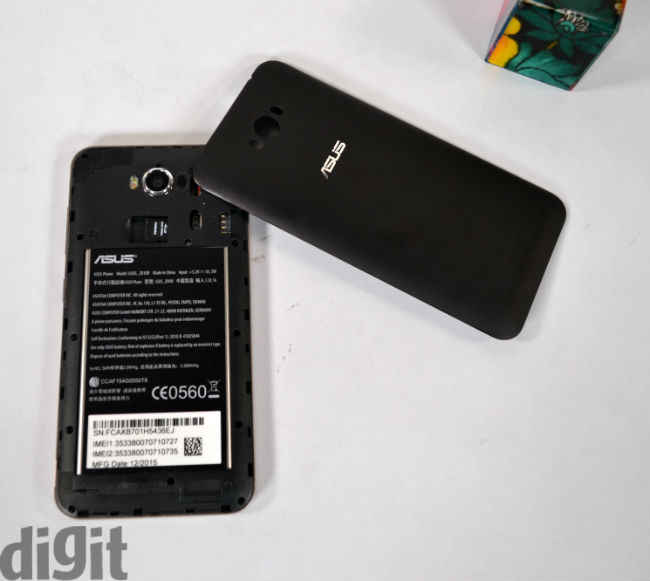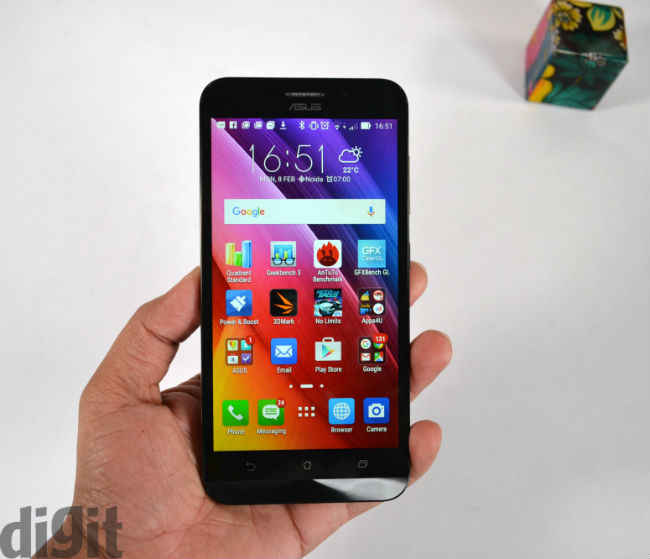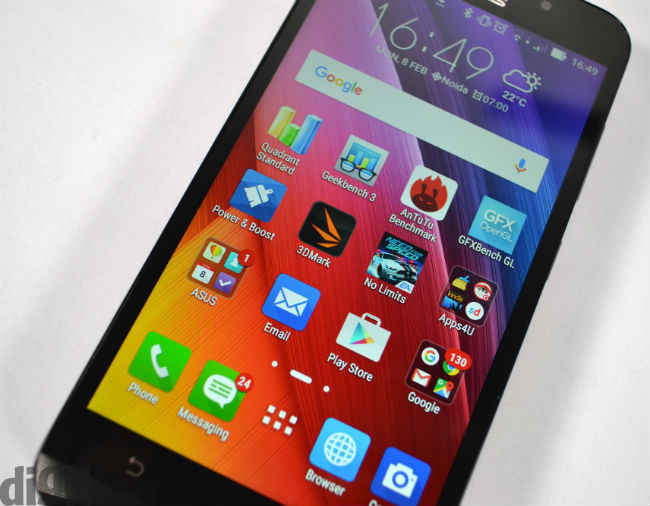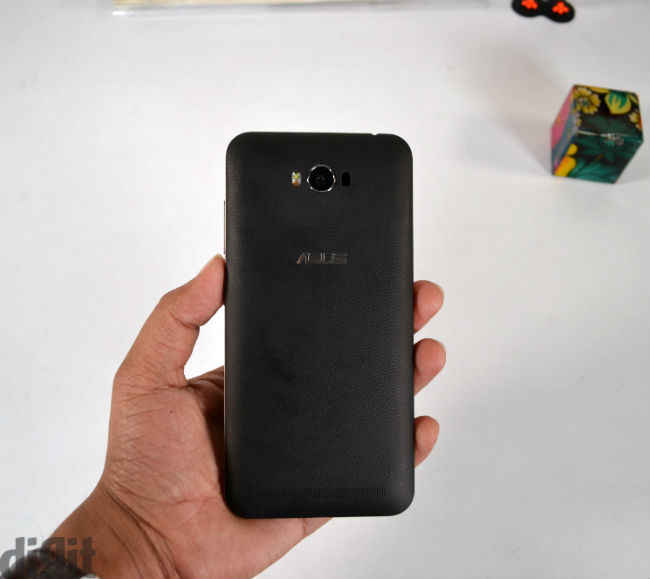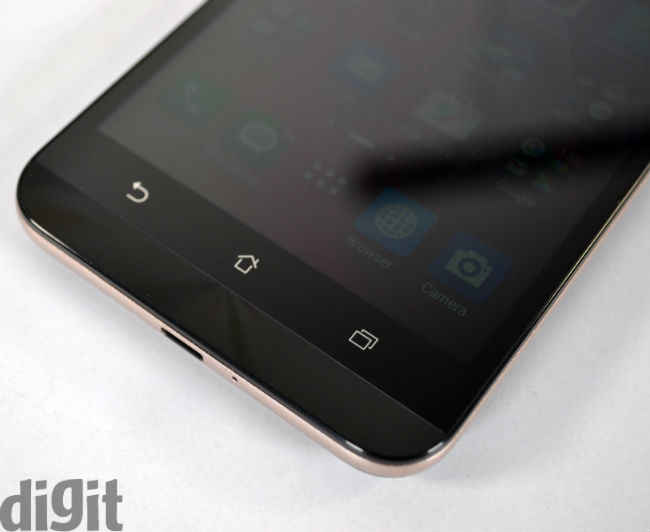Asus Zenfone Max Review : Average performance with great battery life
The phone is okay for basic usage and has good battery backup. If you are looking for a smartphone for multitasking and playing graphics-intensive games, you are better off looking elsewhere.
Build and Design
Personally, I am not a fan of big screen smartphones. They are difficult to use with one hand, feel uncomfortable in the pocket, and are overall too big to use easily. I think that 5.2-inch displays are the perfect fit for smartphones, but then again, that’s just me. There are those who appreciate a larger screen size. The Asus Zenfone Max has a 5.5-inch display, and even though it falls under the category of large screen smartphones, it is quite comfortable to use. This is more because of the way the smartphone is built, rather than the display size. At 10.55mm, the smartphone is the slimmest in its own segment, and adds to the comfort of holding it. The rear panel on the review unit we received has a textured faux leather finish, which is another good addition to the build of the smartphone. The Asus Zenfone Max stands out in terms of design, when you compare it to the smooth plastic back offered on other smartphones in the same price range.
Coming to the connectivity options, you have the standard port placement – a 3.5mm audio jack on the top and the microUSB port at the bottom. The textured power button and volume rocker is on the right edge. You can open the rear panel to access the microSD slot and the two SIM card slots.
Coming to the front of the Asus Zenfone Max, the smartphone has the standard three capacitive buttons below the display – back, home and multitasking. The gold rim surrounding the smartphone isn’t quite Bappi Lahiri's class of bling, but is subtle enough to warrant attention.
Overall, the build of the smartphone is quite good, and is one of the highlights of the Zenfone Max.
Display
As we’ve mentioned earlier, the smartphone has a 5.5-inch display with a resolution of 1280×720 pixels. There are smartphones in the sub-10k price point that boast of Full HD displays, and this display is at a clear disadvantage as far as the pixel density is concerned. But, for practical purposes, the display of the Zenfone Max isn’t too bad. For everyday tasks like messaging, social networking and making calls, the display works fine. Watch a few videos on YouTube, and you will notice a slightly yellow tint on the display. We watched the trailer of The Secret Lives of Pets on the Zenfone Max and the Collpad Note 3 Lite, and the video looked better on the Note 3 Lite.
Coming to the brightness, on automatic adjustment, it's dimmer than what I liked. Essentially, to make the most of the display, you will have to keep it at full brightness, and that isn’t a problem considering the battery that the smartphone houses. The viewing angles on the Zenfone Max are decent, too.
Performance
If you are looking to perform basic tasks on a phone, the Asus Zenfone Max works fine, even though it takes a few seconds longer than I’d like it to respond in. The Snapdragon 410 chipset has begun to show its age when it comes to multitasking and gaming. Doing similar tasks on the Coolpad Note 3 Lite, you will notice that it is much snappier and responds faster than the Zenfone Max. There are times when the Zenfone Max runs smoothly, and this is when there aren’t a lot of apps consuming the memory. There are also times when the phone froze. Overall, when it comes to everyday performance, the Zenfone Max is average at its best.
Coming to the camera, in ideal well-lit situations, the camera takes surprisingly good photos. But, in low-lit conditions, the images are soft, noisy, and have low saturation.
Click to enlarge images
We have seen smartphones in this price point house a fingerprint sensor, but we aren’t complaining about that with the Asus Zenfone Max.
Audio
Moving to the audio output of the smartphone, the Zenfone Max houses its speaker at the back. The speaker is relatively loud for solo listening, and the audio does get a little muffled when the smartphone is placed screen-up on a table, but for the smartphones it is competing against, the sound output is quite good.
Battery
This is what the smartphone was built for, and this is where it shines. On average use, the Asus Zenfone Max was 100% on a Friday morning and on Sunday night it was at about 30%. Of course, my weekend consumption is limited to only a few calls, social networking and YouTube vewing with some GPS (Google Maps) thrown into the mix, and that is very good. For the average work day, you can easily get through 48 hours of usage, with some calling, social networking, emails, messages, the regular work day routine, and with the occasional YouTube and entertainment suite thrown into the mix. Play a lot of games on the device and the battery life suffers, but overall, the battery backup on the smartphone is excellent.
Bottomline
For its price point, the Snapdragon 410 chipset coupled with 2GB of RAM shows its age. The phone lags with heavy multitasking, and there are times when the lag is unbearable. But as far as battery is concerned, the device is a performer, lasting up to 3 days of near-average usage. If you do nothing more than the basics on a smartphone and are looking for a device with killer battery backup, then the Zenfone Max can be a consideration. But, if you are looking for a phone that can be your multitasking weapon and not lag, then you are better off looking at other offerings in the sub-10K price point.
Sameer Mitha
Sameer Mitha lives for gaming and technology is his muse. When he isn’t busy playing with gadgets or video games he delves into the world of fantasy novels. View Full Profile

